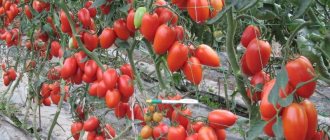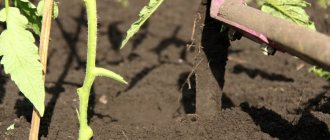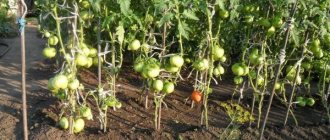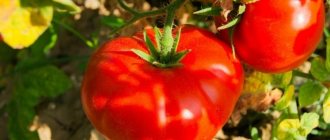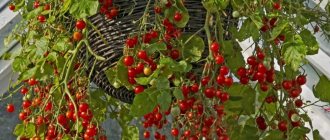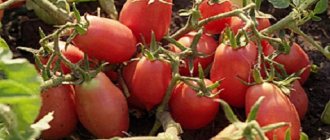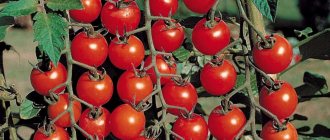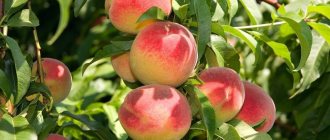Features of the climate of the south of the Russian Federation
In the southern regions of the country the climate is temperate continental with mild winters and hot summers. Spring in these regions is rainy and warm. There are no sudden temperature changes, the weather changes smoothly. Frosts come in December, winter is not harsh. The vegetables are harvested in October; there are no frosts in November.
Table of average daily air temperatures by region:
| Region | April | May | June | July | August |
| Stavropol region | 14-16°С | 19-20°С | 24-28°С | 26-30°С | 28-32°С |
| Krasnodar region | 13-15°С | 18-21°С | 25-27°С | 27-32°С | 28-34°C |
| Volgograd region | 13°C | 23-25°С | 28°C | 30-33°С | 30-31°С |
| Rostov region | 14°С | 24-26°C | 26-27°С | 28-30°C | 30-32°С |
| Astrakhan region | 15-17°С | 25-27°С | 30°С | 30-33°С | 32-35°C |
| Crimea | 13-15°С | 20-24°C | 25-29°С | 28-32°С | 27-33°С |
In the Krasnodar and Stavropol Territories, the planting season opens in February, at which time seeds are sown for seedlings. At the end of May, the first harvest of early varieties of tomatoes is already harvested.
The best varieties of tomatoes for the south of Russia
Varieties of tomatoes have been developed for the southern regions of the Russian Federation, which can bear fruit outdoors in the hot summer. Tomatoes produce abundant harvests, fruits with excellent taste and good transportability.
Variety Generosity
Generosity tomatoes are grown in open soil. The variety has an early period of fruit ripening. Seeds are sown for seedlings in March. Tomatoes have a good taste and are used for salads, sauces and canning.
Characteristics of the variety
Tomatoes are bright red in color, round in shape with thick skin, green leaves. The variety is not prone to growing green mass. Tomatoes are resistant to diseases: septoria blight, macrosporiosis, stemphylliosis, verticillium blight. The plants are determinate, reaching a height of 50 cm. The first inflorescence is formed above the 6-7 leaf, then every 4 leaves.
Main characteristics:
- fruits weigh 60-80 g;
- The tomato has 6 seed chambers with small grains;
- juicy pulp – dry matter 4%;
- sugar content 2.5%;
- growing season 90-100 days;
- 3-4 brushes are tied on each stem;
- 6-8 kg of vegetables are harvested from 1 square meter.
Tips for growing the Generosity variety
Seeds for seedlings are planted from March 20 to April 10. They are buried 1.5 cm into the soil. Sprinkle soil on top and water. Temperature for emergence of seedlings +22-+25°C. Sprouts sprout 7-8 days after sowing. There should be 12-14 hours of daylight for the full development of seedlings. The room needs to be ventilated; plants need fresh air.
Before transplanting into the garden, the seedlings are hardened off. Within 6-8 days, they are taken outside for a couple of hours, the seedlings get used to the air temperature and bright light. Seedlings are planted in the beds in May, there are no longer night frosts, the soil warms up to +16°C. In the fall, the soil is fertilized with potassium-phosphorus additives and compost is added. The scheme for planting seedlings is 40 cm by 60 cm. Drip irrigation is used as the soil dries. To reduce moisture evaporation, the soil should be mulched.
Advice! For the first time after transplanting into the beds, the seedlings need to be shaded from bright sunlight.
Tomato New Kuban
The variety was bred at the Krasnodar Institute. Recommended for growing in open soil. Tomatoes are valued for their good transportability, resistance to infections and excellent taste.
Characteristics of tomato
Plants are determinate, medium in size with moderate branching. The height of the bush is 30-40 cm. An inflorescence with 4 flowers is formed above the 6th leaf. The fruits are large, heart-shaped, weighing 80-110 g. The color of the tomato is red, the surface of the skin is smooth. The number of nests in a tomato is 3-7 pieces. The tomatoes taste great. The dry matter content in fruits is 5-7%.
New to Kuban - a mid-season variety, the fruit ripening period is 140-170 days. Productivity per square meter is 2.5-7 kg. Tomatoes are resistant to late blight and macrosporiosis.
Advantages of the variety
The bushes are compact, which means you can grow 3-4 plants in one square plot. The fruits tolerate transportation well over long distances. Tomatoes do not crack. The variety tolerates drought and heat, and is disease resistant.
In the first two weeks after the start of fruiting, 20% of the total harvest is harvested. Vegetable harvesting takes place in September. On an industrial scale, 375-1030 centners of tomatoes are harvested from 1 hectare.
Tomato Pink Andromeda
The Pink Andromeda hybrid was registered in the State Register, its author is Alexey Mashtakov. A low-growing, determinate variety with ultra-early ripening, it is valued for its good taste and high yield.
Hybrid characteristics
Plant height is 50-70 cm. Fruiting occurs 85-90 days after the first shoots. The weight of one fruit is 100-120 g. The hybrid has high transportability of tomatoes.
The first flowers appear above the 5-6th leaf, then after 1-2 leaves. The brush consists of 4-8 tomatoes. The fruits have dense flesh, they are flat-round, pink or light crimson in color. There are 4-6 seed chambers. Tomatoes are made into puree, ketchup, tomato paste, and the juice is very thick.
Advantages and disadvantages of a hybrid
The yield of the variety in the south of the country is 5-9 kg per 1 sq. m. Pink Andromeda can also be grown in greenhouses, where it bears fruit well - up to 10 kg/sq. m., one plant produces 1-3 kg of fruit.
The fruits are large, all approximately the same size. You can collect tomatoes with brushes and grow plants without a garter. There are few stepsons growing, the bushes are limited in growth. The hybrid tolerates day and night temperature changes. Tomatoes are heat-resistant, but at temperatures above +30*C they can lose flowers and ovaries. The plants have short roots, so tomatoes should be constantly fed and watered.
Important! The hybrid is prone to late blight infection; it is necessary to treat the soil and seeds before planting.
Krasnodar region is a fertile place for any vegetable crop
Mild winters and dry summers are the main climatic feature of the region. In general, the climate of southern Russia is moderate: frosts are rare in winter - the average temperature is 0 ° C; A hot, rainless summer follows a sunny, sometimes rainy, but warm spring (average temperature + 12 °C).
The close location of the Black Sea and the foothills of the Caucasus affects the weather conditions of the Krasnodar Territory - thunderstorms and strong winds in the spring, hot weather in the summer, which is softened by a light monsoon, in the fall - warmth and sun until November
The change of seasons occurs gently, return frosts in winter are unlikely, and real winter begins at the end of December, so you can grow tomatoes in open ground until the end of November, and under cover, for example, in a heated greenhouse, until the New Year.
The gardening season in the Krasnodar Territory starts at the end of February, which is why the first harvest of ground tomatoes appears here in the last ten days of May. The average July temperature in this region is +28 °C, the first month of summer is accompanied by precipitation, and in July - August stable hot weather sets in - ideal weather conditions for nightshades, including tomatoes.
In Krasnodar, large-scale cultivation of tomatoes on farmland is commonplace
Until the beginning of December, the weather is warm and sunny, the air temperature remains +10 +14 °C.
Features of growing tomatoes in the southern region
Sowing of tomatoes for seedlings begins in mid-February - for greenhouses this is the best option; they are planted in beds under cover in March. Soil determinants are sown in early March; they can be planted in a permanent place without picking in the 1st or 2nd decade of April - here Krasnodar residents rely on the weather.
Tomatoes are often grown without seedlings - sown in outdoor beds as soon as the ground warms up; In the future, thinning of young tomatoes is required
The agricultural technology of tomatoes in the Krasnodar Territory does not differ much from the generally accepted one, the main thing is to overcome two problems - heat and drought. If the latter can be dealt with by regular watering at the roots, then the latter is more difficult. One option is to grow sun-tolerant varieties in a greenhouse or use non-woven material. The second is a shading net; many summer residents consider this method to be an effective protection from the scorching southern rays. But more often, zoned varieties come to the rescue of local gardeners - there are always fewer problems with them.
Video: How to cope with the heat - shade net
What else do Krasnodar tomatoes need?
In order for tomatoes to produce a stable harvest, it is necessary:
- after irrigating the beds, carefully loosen the soil;
- fight weeds;
- stepchildren - low-growing tomatoes can also become fatty, so you need to cut out the stepsons in time;
- tie up bushes - determinants with large fruits especially need this;
- apply organic and mineral fertilizers during the growing season (at least 3–4 times from May to August);
- carry out disease prevention (treat with appropriate drugs - Quadris, Fitosporin and others);
- do not forget about mulching with straw, hay, sawdust - this helps well against dehydration and cracking of the soil.
Mulched tomatoes require less moisture
How to choose a variety for hot climates
To get a decent harvest, taking into account the weather specifics of Krasnodar, choose tomatoes:
- heat resistant;
- drought-resistant;
- tolerant to bacterial and fungal diseases;
- low-growing, weakly branched varieties.
Video: varieties for hot climates
The main problem of Krasnodar gardeners is the heat, so tomatoes are often grown under cover. Although most varieties and hybrids of the State Register of the Russian Federation for the southern regions are ground. It is especially important to find tomatoes with good immunity among the huge assortment. Hot weather often causes burns on the fruits, immunity decreases, this provokes the development of a primary infection of tomatoes - any nightshade diseases “stick” to them. As in Central Russia, here they practice the prevention of fungal diseases of tomatoes at an early stage - they are treated with copper-containing preparations, special multi-component products, and the folk methods of country experts are not alien to them (iodine, fermented milk products, herbal infusions). Therefore, breeders annually discover new varieties and hybrids that are more resistant to the sun and high temperatures than their predecessors.
Video: selection of heat-resistant tomatoes for the southern regions
Spring round dance
Spring Round Tomatoes are determinate plants. The variety is medium-sized with compact bushes, but they need to be tied up so that the tomatoes do not lie on the ground. The fruits ripen early; the first tomatoes are harvested already 80 days after planting.
Characteristics of the Spring Round Dance:
- growing season – 80-85 days;
- fruit weight – 100-120 g;
- the skin is strong and does not crack;
- shape – round;
- tomato color – red;
- taste – sweet with sourness.
Advantages of the variety:
- early ripeness;
- tolerates temperature changes;
- flameproof;
- yield - 10-12 kg per 1 sq. m.;
- resistant to viral and fungal infections;
- excellent presentation;
- tomatoes do not spoil when transported over long distances;
- The fruits are used in salads, hot dishes, juices, sauces, and ketchups.
"Leandra F1"
This is another French variety that is striking in its resistance to abnormal heat, as well as a number of tomato diseases.
Medium ripening variety, lettuce, determinate.
Flat-round, red tomatoes have smooth skin and a fairly dense consistency. Tomatoes weighing 90-130 g have a very pleasant, balanced, tomato taste with an “excellent” rating.
Read also: Beekeeping for beginners where to start video
Tomato productivity is up to 775 c/ha, which is much higher than standard varieties.
Advantages:
- productivity;
- heat resistance;
- resistance to a complex of diseases.
Irishka tomatoes
Irishka is an early hybrid, determinant for open ground. The variety has a long fruiting period. The bushes are not tall; plants are grown without pinching. The hybrid is included in the State Register of the North Caucasus District. Irishka tomatoes are resistant to heat and drought. Sow the seeds 45 days before transplanting into the ground. Up to 6 seedlings are placed on 1 square of land. Planting pattern 40 cm by 70 cm.
Main characteristics:
- plant height – 40-50 cm;
- duration of growing season – 85-95 days;
- inflorescence of intermediate type;
- the fruits are round, dense, smooth;
- tomato color – red;
- weight – 50-80 g;
- taste – sweet, sugar content 1.8%, dry matter 3.5%;
- yield - 6-8 kg per 1 sq. m.
Advantages of a hybrid:
- heat resistance;
- tolerates long-term transportation;
- with proper agricultural technology and fertilizing, it bears fruit abundantly;
- resistant to diseases.
Advice! Precursors for tomatoes: zucchini, cucumbers, parsley, cauliflower, dill, carrots.
Heat-resistant varieties for greenhouses
For greenhouses in the southern regions of the country, only heat-resistant varieties of tomatoes are chosen. Even with constant ventilation of the greenhouse, on hot days the temperature in the buildings exceeds +30°C. Plants that are not zoned drop their ovaries, the leaves get burned, and the fruits become small and deformed.
Virtuoso
A productive hybrid, semi-determinate with a growing season of 98-113 days. The average length of the bushes is 1.4-1.7 m. 6-7 kg of vegetables are collected from one bush. The fruits are slightly ribbed, flat-round, red in color with a sweet taste. The weight of one tomato is 150 g.
In the southern regions, the variety adapts well to weather conditions, to differences in night and day temperatures. Virtuosos are grown through seedlings. Seeds are sown 40 days before transplanting into a greenhouse. In the greenhouse, seedlings are planted according to the scheme - 40 cm by 60 cm. The bushes are formed into 1 stem; tall plants need support and a garter. The hybrid is resistant to tobacco mosaic, fusarium, and cladosporiosis.
Kostroma
Semi-determinate hybrid, fruits ripen 100-110 days after sowing. The plant grows up to 2 m in height. Productivity is 15-20 kg per square meter; up to 5 kg of vegetables are harvested from one bush. Tomatoes bear fruit until the first frost.
Fruit characteristics:
- shape – round, tomatoes are ribbed near the stalk;
- color – red;
- taste – sweet and sour, tomato;
- weight – 80-140 g;
- used in canning, making juices and tomato paste.
Babylon
Tomato Babylon is a large-fruited, heat-resistant, indeterminate hybrid. Mid-season tomatoes ripen 120-140 days after germination. The plant is vigorous, the leaves are medium sized. The inflorescence consists of 6 flowers. The hybrid is resistant to mosaic, fusarium, nematode, and tolerates transportation well.
Dense fruits have 3-4 seed chambers. The color of the tomatoes is red, one fruit weighs 150-180 grams. In the photo and description you can see large, beautiful round tomatoes.
Alcazar
The hybrid is indeterminate with powerful roots, the main shoot does not thin out, and can withstand the fruit load well. Alcazar is a mid-early variety; tomatoes ripen 110-115 days after planting. The stem grows all season long, the foliage is large and dark green.
Even in hot weather, plants form new ovaries. The fruits are round, equal in size, and do not crack. Tomato weight – 130-150 g. The hybrid is resistant to blossom end rot and pathogenic flora.
Margarita
Margarita tomatoes are a hybrid variety with a growing season of 95-105 days. The flower raceme consists of 6-8 flowers and grows above the 9th leaf. The height of the bushes is up to 1.8 m. The seedlings are planted in a greenhouse according to a pattern of 40 cm by 50 cm.
The fruits are large, red, weighing 130-160 g. The taste is sweet and sour, the shape is round. Up to 4 kg of vegetables are picked from one plant. Margarita is resistant to tobacco mosaic, cladosporiosis, and fusarium.
Important! To achieve good yield, the plant is formed into one stem.
Chelbas
The hybrid is indeterminate, fruiting occurs on days 110-117. The variety is recommended for cultivation in greenhouse conditions in the south of the country. The inflorescence consists of 5-7 flowers. Ovaries form in any weather; Chelbas bears fruit even in hot weather. It is known far beyond Russia; it is grown in Iran and Egypt.
The fruits weigh 110-130 grams, they have fleshy pulp, and can be stored in a cool place for up to 40 days. Tomatoes do not crack and can be easily transported over long distances. The hybrid is disease-resistant and nematode-resistant. The scheme for planting seedlings is 50 cm by 40 cm. 3-4 plants are grown on 1 square. Productivity – 13-15 kg per square meter. m.
Useful tips for gardeners
If soil moisture constantly changes, root growth stops, tomatoes do not receive enough nutrients, and immunity decreases. Drought-resistant varieties do not need high humidity. The greenhouse must be ventilated daily in any weather. Air humidity is allowed up to 60%, soil humidity up to 80%. At high humidity, infections appear, ovaries crumble, and fruits crack.
Recommendations:
- To prevent the seedlings from stretching out, after planting they are not watered for a week, then the soil is moistened generously.
- To sow seeds, make a light soil mixture consisting of peat, soil, sawdust and sand (1:1:1:1).
- After the ovaries form, the tomatoes are watered 2-3 times every 7-8 days in the morning or evening.
- Seedlings begin to be fertilized 10 days after planting. In total, 3-4 feedings are done per season. Recipe for nutritional composition: dilute manure with water 1:5, add 20 g of superphosphate and 50 g of ash. 0.5 liters of solution is poured onto one plant.
- During the season, the rows are weeded 3-4 times, oxygen is supplied to the root system of the tomatoes, and the plants bear fruit better.
- You need to regularly remove weeds that take away nutrients from the tomatoes.
- Determinate varieties with large fruits need to be tied up and supports installed.
- In order to prevent diseases, bushes are treated with Fitosporin.
- At high temperatures above +35*C, the fruits begin to deteriorate; on such days the bushes should be covered or shaded.
- Mulching is necessary for tomatoes that grow in open soil to retain moisture.
- To prevent tomatoes from cracking, you need to monitor the soil moisture; it should not dry out.
- The bare roots of plants must be covered with soil, otherwise they will burn in the sun.
Important! Varieties that are not resistant to drought and heat will shed their ovaries and bear fruit poorly in the south of the Russian Federation.
Heat-resistant tomatoes are divided into 2 types: generative and vegetative. Vegetative plants are leafy and have many shoots. Seedlings are planted 3 per 1 square meter. Stepchildren need to be removed for better yield. Generative tomatoes have few leaves and shoots. Bushes are planted 4 per 1 square. m. If there is little foliage, then the fruits may burn from the sun; the plants need to be shaded. For the southern regions of the country, it is better to plant heat-resistant hybrids and zoned varieties that will survive in hot climates.
Common mistakes when growing tomatoes
Tomatoes are not unpretentious plants. To grow a rich harvest, you will have to put in a lot of effort and time. Common growing mistakes:
You may be interested in “Pink Miracle” - the earliest and most delicious tomatoFavorable days for planting tomatoes in a polycarbonate greenhouse in 2021 according to the moonPlanting days for tomato seedlings for Siberia in 2021 according to the phases of the moon
- Incorrectly selected seeds. Greenhouse varieties will not give the same results in an open garden bed as in protected ground.
- Pay attention to the seeds you collect yourself. If the planting material was collected from hybrids, then next year you will not get a harvest from the sown seeds.
- Form the bushes according to the recommendations from the originator. If there are no such tips, they are not indicated on the packaging.
- Do not pull the stems of tall tomatoes when tying them to the support.
- Trim the shoots when they do not exceed 3-4 cm. If you do not trim on time, the plant will begin to waste its energy on their growth, which will lead to a decrease in yield.
- Untimely feeding and treatment against pests and diseases leads to the death of vegetable crops.
- You can't water tomatoes every day. Irrigate plants at the root once or twice a week.
The list of heat-resistant tomato varieties for 2021 includes crops with high yields and disease resistance. Grow vegetables in compliance with agricultural techniques in order to obtain the harvest declared by the originator. Each variety has its own characteristics. To avoid growing errors during the entire growing season, familiarize yourself with the detailed breeding characteristics. Reviews about heat-resistant varieties are mostly positive.

